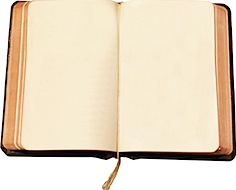A little perspective via Writer’s Digest publisher Jane Friedman:
Stat from BEA: 7% of books published generate 87% of book sales. And 93% of all published books sell less than 1,000 copies each.
A little perspective via Writer’s Digest publisher Jane Friedman:
Stat from BEA: 7% of books published generate 87% of book sales. And 93% of all published books sell less than 1,000 copies each.


A sobering little bit of data, no? But hey, many of us comic writers can take heart that we out sell a large amount of “real” books.
Over what period of time is this?
why does this surprise everyone? does no one comprehend the number of books published every year? i wish hope larson would stop tweeting this kind of stuff so it wouldn’t be posted here.
Let’s look at some real data:
Barnes&Noble / B. Dalton1 – 2008 $4.52 billion (Waiting from 2009 10-K filing)
Borders / Waldenbooks – 2009 $2.65 billion (Down 15% from 2009, excludes international)
BN.com – 2008 $466 million (Down from $477 million in 2007)
Using Amazon is hard because they lump everything together:
Amazon Media (excludes electronics, services – books, includes books, music, DVDs) – 2009 $5.96 billion
But if we just go with Barnes * Noble and Borders, we get about 7.5 billion in sales (not profit)
To make things easier for me, I’m gonna round up to 10 billion (which might also give us some cushion for other points of sale, like Amazon)
So, 7% of books make 8.7 billion dollars
93% make 1.3 billion.
That’s a lot of cash to divide up among smaller publishers.
Overall, this just looks like another version of the Long Tail theory.
What does Hope have to do with this? She’s a great cartoonist. If Heidi from the link from her twitter, all the good for us, as Jane’s twitter has a lot of informative information from the BEA on it, and the realities of Ebook publishing. This kind of stuff needs to be talked about, not ignored.
Popp: obviously, a lot of people are NOT aware how many books are published every year, or Jane Friedman and the 100+ people who retweeted this would ot have thought it was worth sharing. And you are a dimwit. Plonk.
Friedman would be more correct if she had written that 93% of all “published” books sell less than 1,000 copies each — most of that long tail is made up of micro-presses and POD outfits that either charge civilians to print their Aunt Petunia’s memoirs of cornhusking or bring back public-domain works by Edward Bulwer-Lytton. Most of that stuff is never going to sell lots of copies, and no one ever expected it to. It’s really not in the same category as seriously published books with real distribution and potential.
The real point here is that printing is not publishing. The big number is of books printed, but most of them have no marketing plan and no distribution, so it’s a huge stretch to say that they were actually “published.”
Source: Bowker
http://www.bowker.com/index.php/press-releases/616-bowker-reports-traditional-us-book-production-flat-in-2009
2002 215 K (+33K Print On Demand)
2003 240 K (+26K)
2004 276 K (+20K)
2005 252 K (+31K)
2006 274 K (+22K)
2007 284 K (+123K)
2008 290 K (+272K)
2009 288 K (+764K) (projected)
That’s ONE MILLION new (as in new EANs on Books In Print, just in the U.S. market) titles in 2009, the first time it has hit that number.
So, given the above percentage, some twenty thousand titles generated 87% of sales.
But… here’s the question… where is this data coming from? Is it just books from last year? Or is it ALL books ever published? All books in print? If it’s just 2009 “traditional” numbers, then some twenty thousand titles are generating 87% of sales (Seventy thousand if you include all titles).
In remarks to analysts concerning Barnes & Noble’s 2Q2010 results, specifically price wars with mass-market retailers, Steve Riggio remarked that bestsellers represent less than five percent of sales.
A more specific and pertinent question is:
How many titles published made a profit in the first year of publication? How many “earned out” their royalty payments?
Andrew — As a Nebraskan, I say how dare you mock the time honored tradition of corn husking! I bet you raise your nose at de-tassling too.;)
Dear Tartarus Press,
Thank you for offering to publish a collection of my short stories next year. Unfortunately, I have recently learned that the small print run you intend prohibits my work from being regarded as actually “published”. Though I expended almost no effort in creating the book, I feel I am due the prestige and notoriety enjoyed by our preeminent modern authors. I understand there are a few other publishers who deal with similar material; I wonder if you might save me the time and tell me which is better than you?
I’m sure you understand my concern.
cc: “Thought for the day” comment thread
Over at her Writer’s Digest blog, Friedman provided the source for her tweet re book sales. Diane Gedymin had a BEA session on self-publishing, as reported in PW:
Let’s not forget the academic publishing market. Academic libraries are the main market for at least some of these sub-1000 copies books.